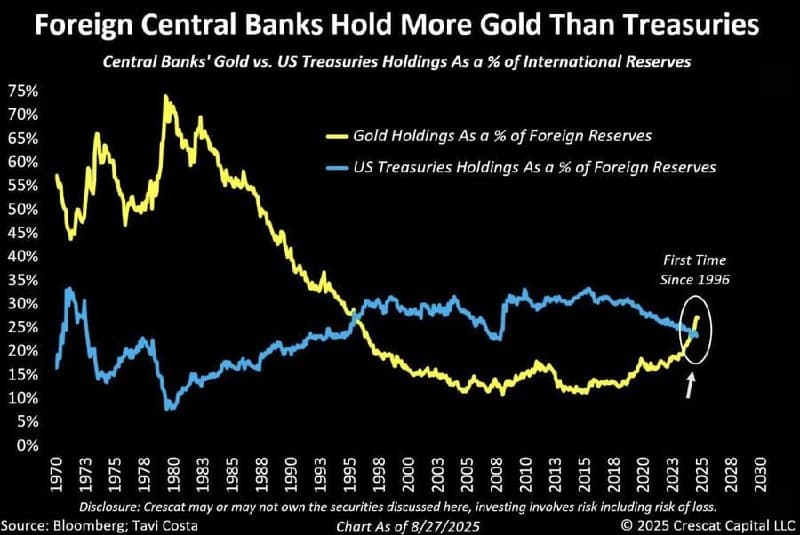In a historic shift, foreign central banks have surpassed U.S. Treasuries in gold holdings for the first time in nearly 30 years, according to recent reports. This development underscores a growing trend among global financial institutions prioritizing gold as a stable reserve asset over traditional government securities.
As of this week, foreign central banks now hold more gold than U.S. Treasuries, reflecting a significant pivot in investment strategies amidst ongoing economic uncertainties. The shift comes as central banks worldwide have been aggressively accumulating gold, with purchases reaching record levels in the past year as they seek to hedge against inflation and currency fluctuations.
This change has been fueled by several factors, including geopolitical tensions and the volatility of the U.S. dollar. Historically, Treasuries have been viewed as a safe haven for foreign reserves, but the increasing instability in the global economy has prompted a reevaluation of this approach. Earlier coverage indicated that central banks in countries like China and Russia have been leading the charge in gold acquisitions, further diminishing the dominance of U.S. debt instruments.
The implications of this trend are significant, as it may affect the demand for U.S. Treasuries and influence global interest rates. Analysts warn that continued shifts toward gold could lead to increased volatility in the bond market, potentially impacting borrowing costs for the U.S. government and consumers alike. This week’s developments mark a pivotal moment in the evolving landscape of global finance, reminiscent of previous reports highlighting economic challenges in various nations, such as Germany"s recent developments with rising unemployment.








![[Video] Coast Guard sniper takes out narco-boat in Eastern Pacific](/_next/image?url=%2Fapi%2Fimage%2Fthumbnails%2Fthumbnail-1765029104101-04awi-thumbnail.jpg&w=3840&q=75)